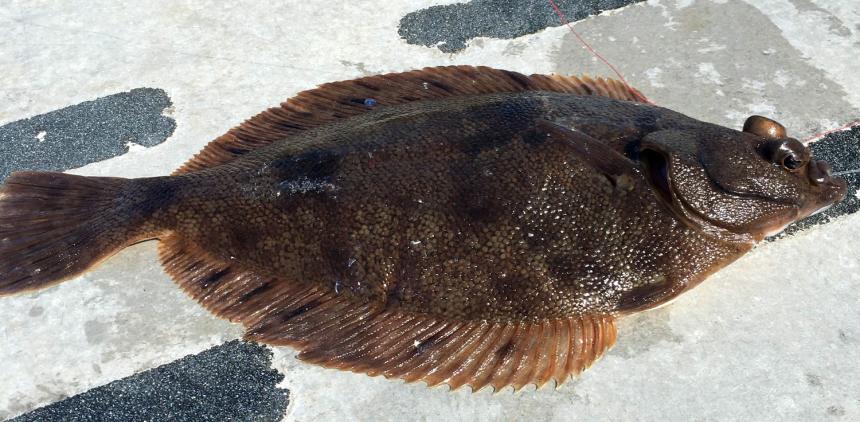Rarely caught off the Washington coast by commercial harvesters using otter-trawls. They are occasionally caught by recreational harvesters within Puget Sound.
Description and Range
Physical description
A right-eyed sole with a thick oval to round body shape covered in rough scales on the eyed side. The eyed side is gray to olive to dark brown or black and is mottled with lighter or darker shades, sometimes spotted with yellow or red. The blind side is usually uniformly creamy white. The dorsal and anal fins have bars or dark blotches on them and may be yellowish near the tail. The caudal fin is rounded or in the shape of a broad ‘V’. This species has a lateral line with a high arch and a flat top with a short accessory dorsal branch. Northern rock sole have a small mouth with fleshy lips and teeth that are more developed on the blind side. The eyes are small. This species has a strong anal spine.
Northern rock sole are very similar to Southern rock sole with the Southern rock sole having fewer gill rakers on the first arch (≤ 3 on the upper portion and ≤ 10 overall) and a light colored blind side with glossy white bands corresponding to muscles bands. They are also similar to Butter sole which has a low lateral line arch and a longer accessory dorsal branch.
Northern rock sole can grow up to 69 cm (27 in) in length. Maximum age is 18 years old.
Geographic range
Northern rock sole are found from St. Lawrence Island in the Bering Sea in north to Puget Sound in the south. They inhabit gravel, sand, and muddy bottoms from 0 to 246 m (0-807 ft) usually on the continental shelf; they tend to be most abundant between 20 and 40 m (66-131 ft).
